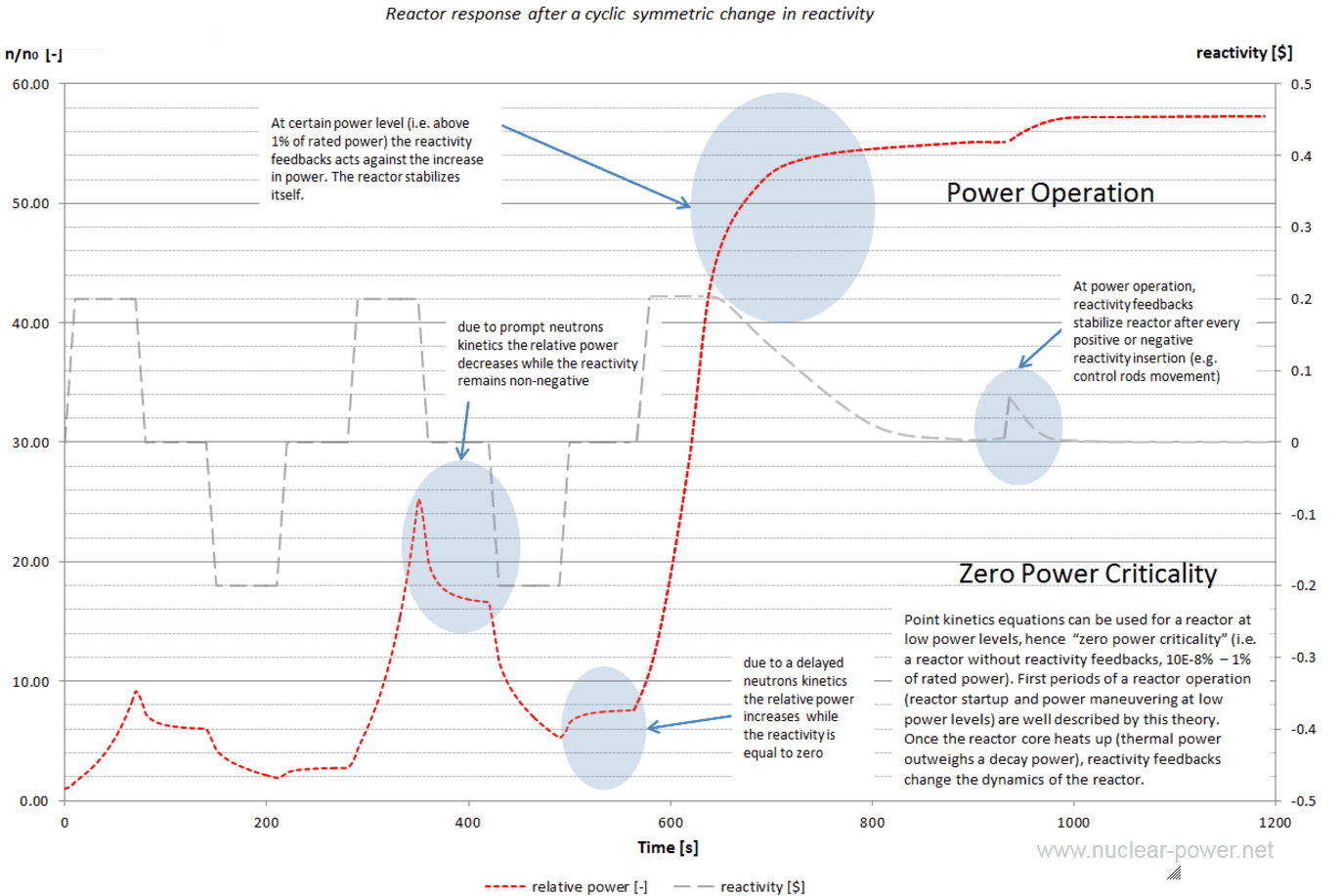TRANSIENTS IN NUCLEAR REACTORS
TRANSIENTS IN NUCLEAR REACTORS
A transient is a change in the reactor coolant system temperature, pressure, or both, attributed to a change in the reactor’s power output.
Transients can be caused by:
- adding or removing neutron poisons
- increasing or decreasing electrical load on the turbine generator
- accident conditions.
As described by Moshkbar-Bakhshayesh and Ghofrani (2013), a transient is defined as an event when a plant proceeds from a normal state to an abnormal state. In nuclear power plants. Recognising the types of transients during early stages, in order to take appropriate actions, is critical. Furthermore, classification of a novel transient as “don't know”, if it is not included within NPPs collected knowledge, is necessary. To fulfil these requirements, transient identification techniques as a method to recognise and to classify abnormal conditions are extensively used.
Example of reactor response after a cyclic symmetric change in reactivity (courtesy of nuclear-power.net)
An example of reactor kinetics and dynamics modelling is described by Johnson et al. (2010). The authors explain that, in order to model a full fuel cycle in a nuclear reactor, it is necessary to simulate the short timescale kinetic behaviour of the reactor as well as the long time-scale dynamics that occur with fuel burnup. The former is modelled using the point kinetics equations, while the latter is modelled by coupling fuel burnup equations with the kinetics equations. When the equations are solved simultaneously, the end result is a code with the unique capability of modelling transients at any time during a fuel cycle.
FACSIMILE kinetic modelling can simulate the occurrence of transients in reactors to describe the reaction kinetics and provide tools for owner/operators to optimise systems and reduce such occurrences. Such applications enable users to improve various plant factors, including output efficiency and safety.



